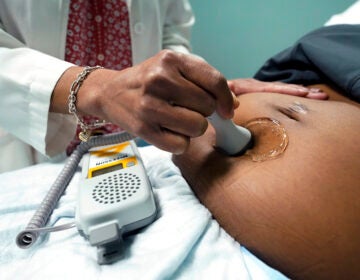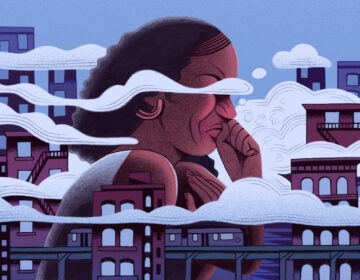Most Philly health providers cannot speak Vietnamese. A local pharmacist is trying to change that through a stroke education program
Viet-Capacity has reached over 800 Vietnamese-speaking Philly residents with culturally tailored education around cardiovascular disease.
Listen 1:31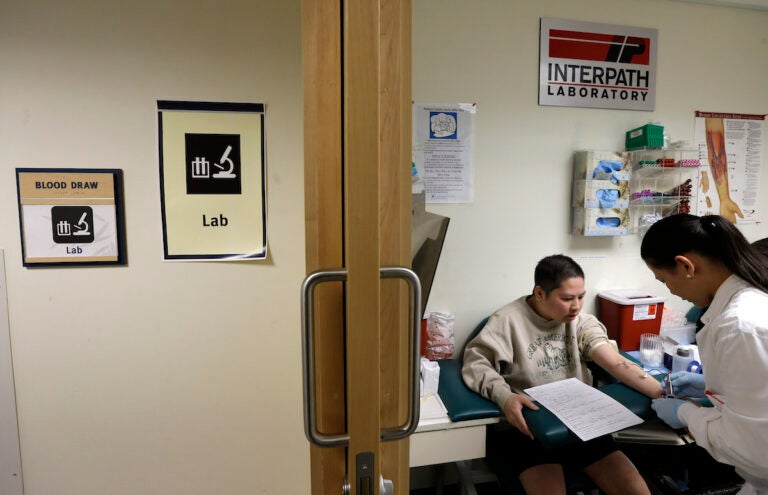
File - Loan Truong, left, who is Vietnamese, has blood drawn by Rechyle Torio, right, a phlebotomist, Friday, March 1, 2013 at International Community. (AP Photo/Ted S. Warren)
Van Hellerslia was born in Vietnam and immigrated to the United States as a refugee when she was two. She grew up in the Logan neighborhood of North Philadelphia. Her family spoke Vietnamese at home, and her proficiency in English was almost non-existent.
“I pretty much grew up learning English either from Sesame Street or going to school,” she said.
When she was 11 years old, her mother began experiencing serious health issues. Hellerslia found herself in a health navigator role, something she says she was not quite ready for.
“I was a middle schooler … I’m not an adult. I can have language skills, but I may not have the emotional skills of being able to handle all of this health information,” she recalls. “The process was having to help my parents make appointments and just serve as a translator.”
After attending high school, Hellerslia went to college and worked as a clinical pharmacist for 15 years. She once dreamt of going back to Vietnam to do medical mission work.
“That was always like a far-off dream, to be honest, and it’s not something that I knew that I could do anytime soon because, quite frankly, with three kids,” she said.
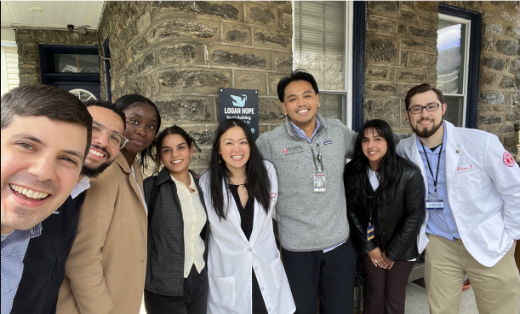
She’s now an Associate Professor at Temple University School of Pharmacy and a clinical pharmacist at Temple’s Department of Neurology, where she sees patients for strokes and seizures.
“I realized I don’t have to go overseas to make an impact because there’s plenty of needs right here in North Philadelphia,” she said.
That’s because here in Philadelphia, Vietnamese-speaking patients experience serious health challenges, often stemming from language barriers.
“We don’t typically think of Asian Americans as having health disparities because when you look at large data sets, you’ll see this whole idea of the “model minority” myth, and the idea that Asians are healthy and wealthy and they have no health disparities,” she said.
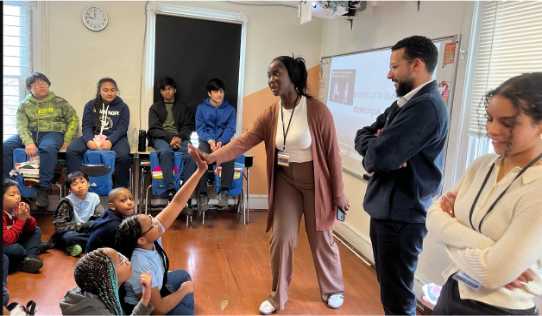
In 2022, Hellerslia created “Viet-Capacity,” a community-based stroke education program that prioritized reaching out to Vietnamese-speaking residents in the community.
With the help of Vietnamese-speaking graduates from Temple’s School of Pharmacy — about 15 ambassadors working in small groups — the program has reached almost 800 members of the Vietnamese community in Philadelphia so far.
“The goal of Viet-Capacity was to equip and empower Vietnamese-speaking pharmacists number one…building their leadership, giving them the education they need to even communicate in Vietnamese about the signs and symptoms of stroke and about the risk factors,” she said.
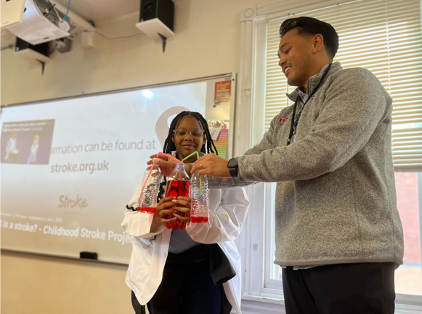
In Phase 1 of the program, Viet-Capacity partnered with the Philadelphia Police Department to create an audio simulation of how a community member would hear an emergency line if they dialed 911 to report a stroke.
The program also seeks to address some lifestyle issues that contribute to stroke risk in the Vietnamese community, like smoking. According to a Stanford Medicine study, smoking accounts for 28% of deaths of adult Vietnamese men and 85% of lung cancer-related deaths.
“We do know that smoking is very high among the Vietnamese compared to the other Asian subgroups, and it’s particularly Vietnamese males,” she said.
One of the most prevalent health outcomes is cardiovascular disease, largely due to smoking habits.
“Some of the education that the pharmacist did in their community-based education was to talk about the risk factors of stroke, high blood pressure and cholesterol,” she said.
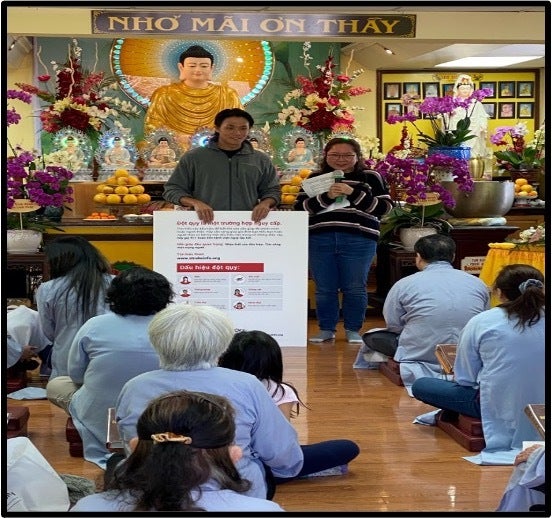
The program also helps Vietnamese-speaking pharmacists feel comfortable communicating in their language with their patients. Hellerslia said she is also using the project to teach pharmacists about different dialects.
“While we worked in small groups there were pharmacists who spoke Vietnamese with a northern dialect versus the southern dialect,” she said. “And that was one of the strengths actually of our program was that we were able to just have different representation and there’s all so the difference is between the lay language versus the technical language.”
Language issues for Asian American and Native Hawaiian/Pacific Islander (AANHPI) are often the leading barrier to healthcare services, Hellerslia said.
“Through the work that I’ve been doing and the patients that I see at Temple University,” she said. “We see a lot of challenges that patients endure largely if they have language barriers, limited English proficiency, low health literacy – and that’s on top of poverty, bias…discrimination.”
Around one in four Asian American and Native Hawaiian/Pacific Islander (AANHPI) adults living in the United States are not proficient in English.
According to the Urban Institute, between six Asian subgroups – Chinese, Indian, Filipino, Korean, Japanese, and Vietnamese – Vietnamese adults aged 19 to 64 had among the highest limitations of English comprehension at 50%. In 2017, a study found that Vietnamese was the most underrepresented language among healthcare providers in Philadelphia.
“When we look at Philadelphia, Vietnamese is the number one underrepresented language,” Hellerslia said. “Meaning there are a lot more Vietnamese-speaking people in Philadelphia than there are physicians that can speak Vietnamese.”
The next phase of Viet-Capacity, Hellerslia said, is going into a North Philly school. She said she wants to help teach refugee children about stroke education and see young medical professionals they can look up to.
“A lot of these students are from under-resourced homes,” she said. “They’re first generation themselves kind of going through the system. So I think inspiration like that is able to build the pipeline from a much younger age. And then utilizing my pharmacy students not only to be an inspiration to these younger kids, but also these medical students being able to be intentional about their now working on other immigrant groups.”
Support for WHYY’s coverage of health equity issues comes from the Commonwealth Fund.
WHYY is your source for fact-based, in-depth journalism and information. As a nonprofit organization, we rely on financial support from readers like you. Please give today.



